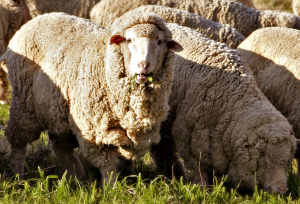Socks can be made using various textiles and we want to share some fun fibre facts.
Merino wool – Is the fibre obtained from a specific lineage of sheep. The Merino breed was originally from Alentejo in the south of Portugal (1). Today Merino sheep are found in various regions of the world, with Australia being a leading producer, and their fleece is still considered to be the finest and softest of any sheep (2). Wool is different than hair or fur because it is crimped, it is elastic and it grows in staples (clusters) (3). These unique properties of wool make it ideal for spinning and also provide some of the basis for it use in the manufacturing of clothing such as socks. Merino wool is super fine, approximately 16 microns, is able to absorb moisture, is insulating, is fire resistant and is hypoallergenic (4).
Alpaca fleece – Is the fibre obtained from an alpaca which have been bred in South America for thousands of years. Today alpacas are bred in various regions of the world, with regional contribution from the USA, Australia and New Zealand (5). The alpaca fibre is partly hallow, has a diameter from 20 to 70 microns and comes in 22 natural colours (6). Alpaca fibre provides excellent insulation, is naturally water-repellant and difficult to ignite while also being light and stronger than sheep’s wool (7). Many textile manufactures will blend alpaca fibre with wool to create cloth for clothing.

Bamboo fibre – Comes from the starchy pull of bamboo plants and was traditionally used in China and Japan for structural elements (8). The manufacturing of bamboo to obtain bamboo fibres can be either mechanical processing or chemical processing (9). Bamboo is naturally anti-bacterial, biodegradable, breathable and cool and soft to the touch. The use of the bamboo fibre in textile manufacturing produced a soft feeling product and is able to absorb and evaporate sweat. The use of bamboo in the manufacturing of socks was increased because of the bamboo’s fibres ability to help with moisture management and the fact that it is able to help in temperature regulation.
Although the exact sources of these fibres vary, they all share one thing in common – they are natural. It is amazing to think about all the wonderful uses for these fibres. Go and explore the feel of these fibres to see if one works best for you.
- https://en.wikipedia.org/wiki/Merino
- http://www.naturalfibres2009.org/en/fibres/wool.html
- D'Arcy, J. B.,Sheep and Wool Technology, NSW University Press, Kensington, 1986 ISBN 0-86840-106-4
- http://www.iwto.org/wool/the-natural-fibre/
- https://en.wikipedia.org/wiki/Alpaca_fibre
- http://www.naturalfibres2009.org/en/fibres/alpaca.html
- https://en.wikipedia.org/wiki/Alpaca_fibre
- https://en.wikipedia.org/wiki/Bamboo_textiles
- http://www.teonline.com/knowledge-centre/bamboo-fiber.html


